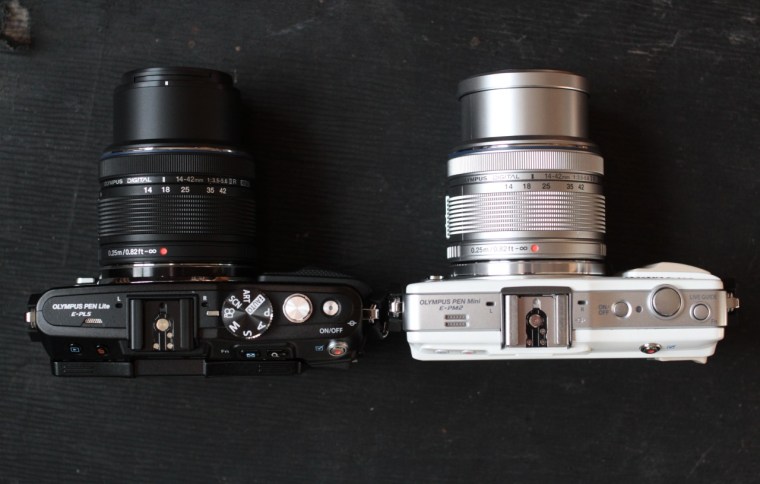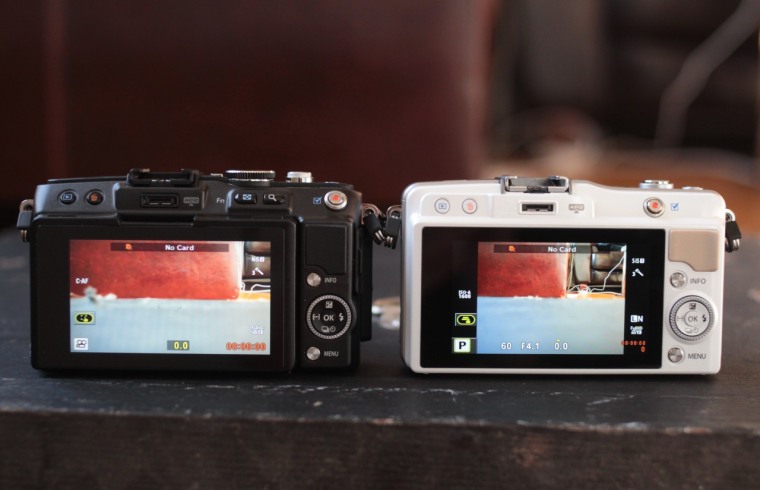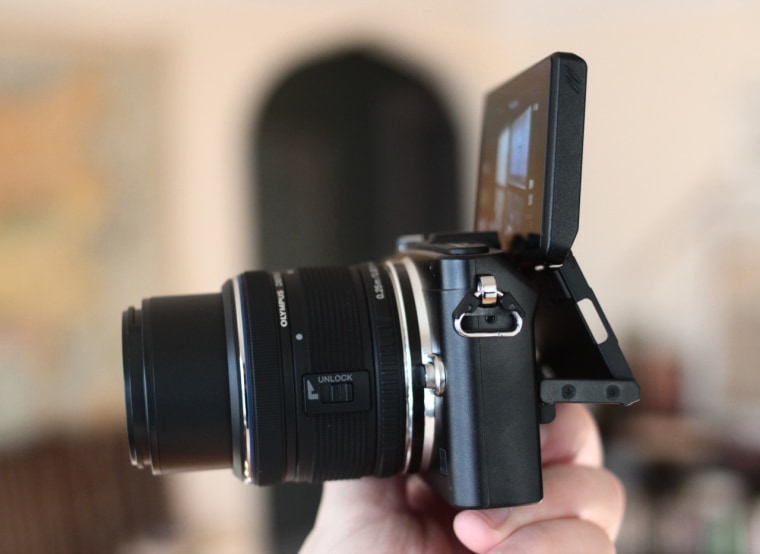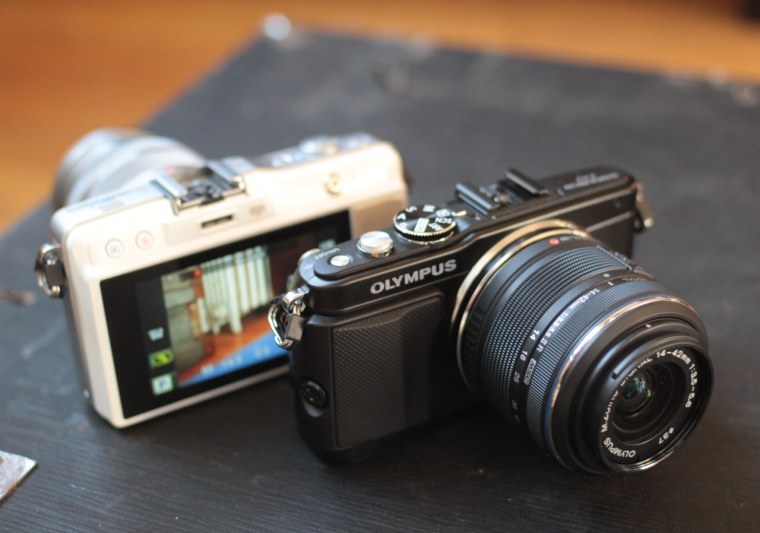The E-PL5 and E-PM2 (or PEN Lite and PEN Mini, respectively) are the latest micro four-thirds cameras from Olympus. The competition is fierce at the $500-$700 level, which is what these devices go for; Are these cameras worthwhile? And which should you get?
The name "micro four-thirds" refers to the size of cameras' sensor, which is four-thirds of an inch diagonally. It's smaller than the most common DSLR sensor (APS-C) by quite a bit, and in the early days that meant image quality and size weren't as good. But the later generations improved that, and in particular Olympus's E-M5, which we reviewed here, stood out as at least as good as the DSLR competition.
The 16-megapixel sensor that produced such solid images in the E-M5 was passed on to the new PEN series, which means you can get essentially the same images as that $1,300 camera for half the price. You give up the electronic viewfinder and a number of other features, but you'll get great pictures and solid HD video. That we knew before even holding the cameras. So, how do they handle?
Lite vs. Mini
The two models of PEN are totally interchangeable as far as image quality is concerned. If you put them in the same situation with the same settings, the resulting pictures will be more or less indistinguishable. They do differ in other ways, however.

The E-PL5 costs $100 more (for a total of $699 with kit lens), and for that extra bill you get a few things: An articulating LCD screen that can tilt down, up, or flip over completely; A dial to switch quickly between shooting modes; a more "pro" looking button layout; and, lastly, swappable front grips. It's also a little thicker, but both cameras are very compact.
Trust me, go with the E-PL5 over the E-PM2. I like the buttons and layout better, the articulating LCD is useful and the mode dial is more convenient than using the menu to change modes. Losing those features isn't worth keeping that $100.
Small hands recommended
Compact cameras tend to fall under two categories: fiddly and non-fiddly. These are definitely fiddly.
If you have large hands and/or do not enjoy navigating menus via tiny control dials and microscopic buttons, these cameras are not for you. The thumb dial is scarcely half-an-inch in diameter and those with large fingers will have to use a fingernail for fine adjustments.

Fortunately, you have a touchscreen with which to change settings, but it too is petite, and while sometimes it's convenient to use a fingertip instead of the control dial, the settings don't feel like they were designed for touch.
Using the touchscreen to take a picture, however, is snappy and fun, just as it was on the E-M5. Autofocus performance is not supposed to be as good, but it's definitely fast enough to catch a cat jumping or a kid smiling.
Power users, prepare for frustration
The documentation and settings for the PEN series are just plain bad. The manual is incomplete and the translation so-so. And while a simplified menu might make sense for the consumer-oriented PEN Mini, why not pull out the stops on the more upmarket PEN Lite?
Let's say you wanted the function button to switch between manual and autofocus, and you want the dial to control aperture in A mode. You have to go deep into the menus to enable advanced settings at all, then navigate to Settings -> Custom Menu -> Button/Dial -> Button Function -> Function and search through the list for what you want. Then you have go deep into Dial Function to "unlock" the dial, allowing it to... work like a dial. Why was it "locked" in the first place?
These buried settings give you a lot of control over the camera, which was one of the things that made the E-M5 so exciting. And if you spend half an hour poring over these things (as I said, the manual is little help), you can get things set up nicely. But why are some basic settings five menus deep? And why do others, like flash mode, offer more options than you need from the get-go? It's illogical, and potentially confusing to someone who doesn't want to spend a lot of time experimenting with their new camera.
Better than the rest?
The new sensor in the PEN cameras gives them a leg up on the competition; super-compact camera systems like Pentax's Q and Nikon's 1 series have compromised on image quality to save space (though they're by no means poor cameras). Other M4/3 systems, like those from Panasonic, are better but still not up to the challenge.

On the other hand, I felt like Panasonic's GX1 (released early this year) was more friendly to serious shooting — and it has a pop-up flash to boot. Handling isn't the PEN series' strong point, and Olympus should consider doing a serious redesign of the layout and interface.
If you're willing to spend a little more, Sony's NEX series has improved quite a bit since its early days; The NEX-5R is the latest in the line and has garnered solid reviews. And Canon's first foray into mirrorless cameras, the EOS M, is also an attractive option if you want to take advantage of that company's great lens selection.
Leave the E-PM2 on the shelf; if you want to save money, pick up a high-end point-and-shoot like the Canon S110 or the Panasonic LX7. But if you have small hands, love good image quality, and want an articulating screen, the E-PL5 is a solid choice — once you spend a little time getting it to work the way you want it to.
Devin Coldewey is a contributing writer for NBC News Digital. His personal website is coldewey.cc.
